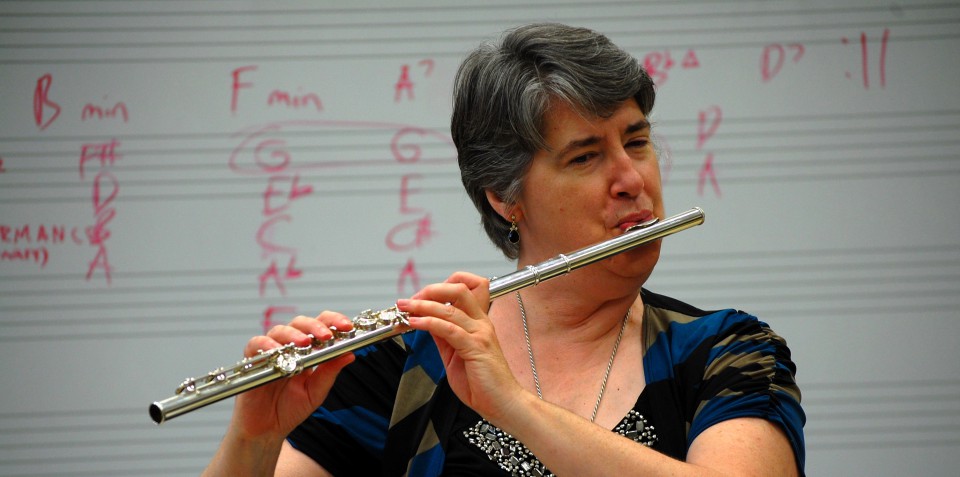You might think that it doesn’t matter if your beginners and intermediate flute students can play with a good sound in the low register. After all, most band literature written for the first three years of playing rarely goes below an A or G. However, flutists know that good tone in the low register is the basis for a full, singing sound in the other two registers. Without some focus and body in the tone in the low register, the middle and high registers can sound thin, reedy and pinched.
Let’s just say at the outset that the philosophy of flute tone that recommends a “looser” embouchure in the lower register and a “tighter” embouchure the higher one goes doesn’t work. The result of this approach is that the low notes sound unfocused, wooly and without projection. The upper register sounds pinched, thin, sharp and strident. With such huge tonal defects, the flute section doesn’t blend well with the rest of the ensemble. The tone color is too different. You may find it surprising that, in fact, just the opposite is true. A strong low register is based on gripping the aperture firmly and blowing with a supported airstream. A clear open third octave still depends on a supported airstream, but also a somewhat more relaxed grip on the aperture. You can let the speed of the air do the work for you.
How can your students develop these skills? The classic exercise is the long tones devised by Marcel Moyse after he heard Nellie Melba vocalizing. Let me say though, this exercise works best with students who have been playing several years. The kids need to have a little maturity to understand why they should take the time to work slowly, evaluate what they are doing, compare and experiment with how they are blowing and shaping the embouchure. In my experience, this exercise is good for mature 14 year olds and up. 
What can you do with the younger students? The old standby octave exercise is unmatched for helping beginners and intermediate students learn to focus and direct the air in every register. Because one is playing a lower and higher note, naturally it follows to compare the sound quality of the two registers. Both registers improve. The student doesn’t even really need to be terrifically self-aware to benefit from practicing octaves. If done regularly, it can just improve without a lot of conscious effort of the part of the student. It does help to be able monitor the students periodically and comment on ways they can experiment with the exercise.
When you help your students develop their low register tone, your entire ensemble will benefit because the flutes will have a more characteristic sound that blends better with other sections and they will play better in tune in all registers.
If you find these entries helpful, subscribe, share with your colleagues and come back next week for another flute tip. Please comment and feel free to ask questions. Maybe the answer to your question will be the next flute tip. Find me on Facebook or email me at dr_cate@sbcglobal.net. For information about clinics and workshops click here.

Cate, I manage to have even beginners do the startup for the Moyse exercises, which is playing 3rd line B’s and trying to make them as focused, and beautifully flute-like as you can. I then follow with some descending slurs, octaves, and the B to C# tone matching. I was introduced to these of the Moyse via Suzuki/Takahashi training and have had them work well throughout my years in elementary and middle school teaching. I think the trick is to not over-stress, but to add these as a regular part of lessons and by extension, practice by the student.
LikeLiked by 1 person
Pingback: The Sequential Nature of Flute Fingerings | Dr. Cate's Flute Tips